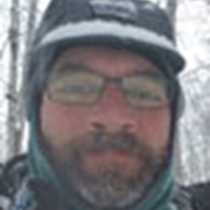Pavlof Creek
Pavlof Creek drains into the beautiful protected harbor of the same name. Russian fur traders used this harbor and the surrounding landscape during the mid-nineteenth century. Today the National Geographic Sea Lion and the compliment of guests would explore this marvelously rich landscape. The creek that drains a scenic meadow-ringed lake will soon be filled with runs of Sockeye (Red) salmon. A cascading rapid separates the lake outlet from the short tidally influenced creek mouth. A fish ladder was built along side the falls to aid the salmon in their return to their spawning grounds.
The temperate rain forests of Southeast Alaska are amazingly diverse and rich with life. For the majority of the week’s expedition, our guest were experiencing atypical weather for this ecosystem. By atypical I mean, sunny and warm. Today the true nature of what drives this incredible system was to be an important part of our time on land here. The morning began with low clouds and patchy sunlight. We hiked along the path left by countless generations of brown bears and past explorers of this region. The narrow path quickly took us from the creek side to the forested valley walls paralleling the lake. Massive Sitka spruce formed the canopy while younger Western hemlock filled in the gaps below. We were taken aback by a standout member of this forest – a Sitka spruce measuring at least 7 feet in diameter clung to the edge of the valley, a tree that likely saw the Russian fur traders pass though this very spot.
A bit further down the trail, a high-pitched squeaking could be heard coming from the trees on our right. Closer examination revealed a standing dead spruce about 40 feet tall, stripped of its bark with several golf ball sized holes in it. After observing for a time, a flash of life appeared clinging to the side of the tree at the base of one of the holes. A red-breasted sapsucker male was feeding the hungry chicks inside. The instant the adult lay up on the tree the squeaking ceased as the chicks’ pleas were answered. We watched this scene unfold a few times, including the adults feeding at their “sappery” on a nearby spruce.
We wound down the trail and spilled out into a picturesque meadow of tall shoreline grasses that surrounded the lake. An active beaver lodge was spotted adjacent to the lake just as the outlet flow began to channelize towards the crashing falls. The hike continued around the lake, and we stopped to examine patches of wildflowers, including the insectivorous sundews of this developing muskeg habitat.
After a brief but enjoyable moment of soaking in the surroundings of this sublime landscape we headed back towards the beach. Our return hike was to be a bit more representative of Southeast Alaska and the temperate rainforests that exist here. The breeze turned to gusty wind and droplets of rain began to grace the surrounding vegetation and tranquil lake surface. Soon we were pulling out raingear to protect us from the already-soaked grasses and falling rain. The forest and its surroundings had come to life in a fashion more typical of its ecological classification.
We set sail from this remarkable location leaving the rain to shape this landscape as it has done for millennia.



